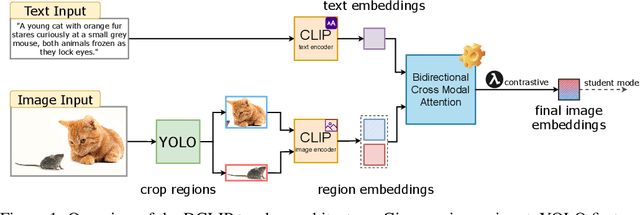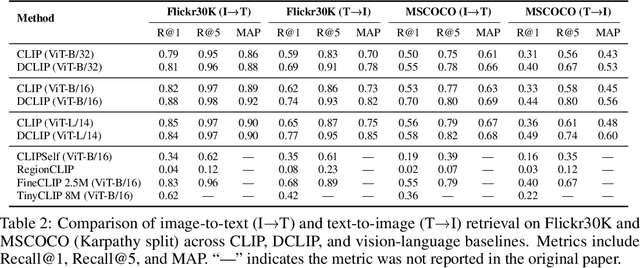Sean O'Brien
SwiftSolve: A Self-Iterative, Complexity-Aware Multi-Agent Framework for Competitive Programming
Oct 26, 2025Abstract:Correctness alone is insufficient: LLM-generated programs frequently satisfy unit tests while violating contest time or memory budgets. We present SwiftSolve, a complexity-aware multi-agent system for competitive programming that couples algorithmic planning with empirical profiling and complexity-guided repair. We frame competitive programming as a software environment where specialized agents act as programmers, each assuming roles such as planning, coding, profiling, and complexity analysis. A Planner proposes an algorithmic sketch; a deterministic Static Pruner filters high-risk plans; a Coder emits ISO C++17; a Profiler compiles and executes candidates on a fixed input-size schedule to record wall time and peak memory; and a Complexity Analyst fits log-log growth (s, R2) with an LLM fallback to assign a complexity class and dispatch targeted patches to either the Planner or Coder. Agents communicate via typed, versioned JSON; a controller enforces iteration caps and diminishing returns stopping. Evaluated on 26 problems (16 BigO, 10 Codeforces Div. 2) in a POSIX sandbox (2 s / 256-512 MB), SwiftSolve attains pass@1 = 61.54% (16/26) on the first attempt and Solved@<=3 = 80.77% with marginal latency change (mean 11.96 s to 12.66 s per attempt). Aggregate run-level success is 73.08% at 12.40 s mean. Failures are predominantly resource-bound, indicating inefficiency rather than logic errors. Against Claude Opus 4, SwiftSolve improves run-level success (73.1% vs 52.6%) at approximately 2x runtime overhead (12.4 s vs 6.8 s). Beyond correctness (pass@k), we report efficiency metrics (eff@k for runtime and memory, incidence of TLE or MLE, and complexity fit accuracy on BigO), demonstrating that profiling and complexity-guided replanning reduce inefficiency while preserving accuracy.
ERGO: Entropy-guided Resetting for Generation Optimization in Multi-turn Language Models
Oct 15, 2025Abstract:Large Language Models (LLMs) suffer significant performance degradation in multi-turn conversations when information is presented incrementally. Given that multi-turn conversations characterize everyday interactions with LLMs, this degradation poses a severe challenge to real world usability. We hypothesize that abrupt increases in model uncertainty signal misalignment in multi-turn LLM interactions, and we exploit this insight to dynamically realign conversational context. We introduce ERGO (Entropy-guided Resetting for Generation Optimization), which continuously quantifies internal uncertainty via Shannon entropy over next token distributions and triggers adaptive prompt consolidation when a sharp spike in entropy is detected. By treating uncertainty as a first class signal rather than a nuisance to eliminate, ERGO embraces variability in language and modeling, representing and responding to uncertainty. In multi-turn tasks with incrementally revealed instructions, ERGO yields a 56.6% average performance gain over standard baselines, increases aptitude (peak performance capability) by 24.7%, and decreases unreliability (variability in performance) by 35.3%, demonstrating that uncertainty aware interventions can improve both accuracy and reliability in conversational AI.
Filtering for Creativity: Adaptive Prompting for Multilingual Riddle Generation in LLMs
Aug 26, 2025Abstract:Multilingual riddle generation challenges large language models (LLMs) to balance cultural fluency with creative abstraction. Standard prompting strategies -- zero-shot, few-shot, chain-of-thought -- tend to reuse memorized riddles or perform shallow paraphrasing. We introduce Adaptive Originality Filtering (AOF), a prompting framework that filters redundant generations using cosine-based similarity rejection, while enforcing lexical novelty and cross-lingual fidelity. Evaluated across three LLMs and four language pairs, AOF-enhanced GPT-4o achieves \texttt{0.177} Self-BLEU and \texttt{0.915} Distinct-2 in Japanese, signaling improved lexical diversity and reduced redundancy compared to other prompting methods and language pairs. Our findings show that semantic rejection can guide culturally grounded, creative generation without task-specific fine-tuning.
Distill CLIP (DCLIP): Enhancing Image-Text Retrieval via Cross-Modal Transformer Distillation
Jun 01, 2025



Abstract:We present Distill CLIP (DCLIP), a fine-tuned variant of the CLIP model that enhances multimodal image-text retrieval while preserving the original model's strong zero-shot classification capabilities. CLIP models are typically constrained by fixed image resolutions and limited context, which can hinder their effectiveness in retrieval tasks that require fine-grained cross-modal understanding. DCLIP addresses these challenges through a meta teacher-student distillation framework, where a cross-modal transformer teacher is fine-tuned to produce enriched embeddings via bidirectional cross-attention between YOLO-extracted image regions and corresponding textual spans. These semantically and spatially aligned global representations guide the training of a lightweight student model using a hybrid loss that combines contrastive learning and cosine similarity objectives. Despite being trained on only ~67,500 samples curated from MSCOCO, Flickr30k, and Conceptual Captions-just a fraction of CLIP's original dataset-DCLIP significantly improves image-text retrieval metrics (Recall@K, MAP), while retaining approximately 94% of CLIP's zero-shot classification performance. These results demonstrate that DCLIP effectively mitigates the trade-off between task specialization and generalization, offering a resource-efficient, domain-adaptive, and detail-sensitive solution for advanced vision-language tasks. Code available at https://anonymous.4open.science/r/DCLIP-B772/README.md.
From Directions to Cones: Exploring Multidimensional Representations of Propositional Facts in LLMs
May 27, 2025



Abstract:Large Language Models (LLMs) exhibit strong conversational abilities but often generate falsehoods. Prior work suggests that the truthfulness of simple propositions can be represented as a single linear direction in a model's internal activations, but this may not fully capture its underlying geometry. In this work, we extend the concept cone framework, recently introduced for modeling refusal, to the domain of truth. We identify multi-dimensional cones that causally mediate truth-related behavior across multiple LLM families. Our results are supported by three lines of evidence: (i) causal interventions reliably flip model responses to factual statements, (ii) learned cones generalize across model architectures, and (iii) cone-based interventions preserve unrelated model behavior. These findings reveal the richer, multidirectional structure governing simple true/false propositions in LLMs and highlight concept cones as a promising tool for probing abstract behaviors.
FAIRE: Assessing Racial and Gender Bias in AI-Driven Resume Evaluations
Apr 02, 2025Abstract:In an era where AI-driven hiring is transforming recruitment practices, concerns about fairness and bias have become increasingly important. To explore these issues, we introduce a benchmark, FAIRE (Fairness Assessment In Resume Evaluation), to test for racial and gender bias in large language models (LLMs) used to evaluate resumes across different industries. We use two methods-direct scoring and ranking-to measure how model performance changes when resumes are slightly altered to reflect different racial or gender identities. Our findings reveal that while every model exhibits some degree of bias, the magnitude and direction vary considerably. This benchmark provides a clear way to examine these differences and offers valuable insights into the fairness of AI-based hiring tools. It highlights the urgent need for strategies to reduce bias in AI-driven recruitment. Our benchmark code and dataset are open-sourced at our repository: https://github.com/athenawen/FAIRE-Fairness-Assessment-In-Resume-Evaluation.git.
Disentangling Likes and Dislikes in Personalized Generative Explainable Recommendation
Oct 17, 2024



Abstract:Recent research on explainable recommendation generally frames the task as a standard text generation problem, and evaluates models simply based on the textual similarity between the predicted and ground-truth explanations. However, this approach fails to consider one crucial aspect of the systems: whether their outputs accurately reflect the users' (post-purchase) sentiments, i.e., whether and why they would like and/or dislike the recommended items. To shed light on this issue, we introduce new datasets and evaluation methods that focus on the users' sentiments. Specifically, we construct the datasets by explicitly extracting users' positive and negative opinions from their post-purchase reviews using an LLM, and propose to evaluate systems based on whether the generated explanations 1) align well with the users' sentiments, and 2) accurately identify both positive and negative opinions of users on the target items. We benchmark several recent models on our datasets and demonstrate that achieving strong performance on existing metrics does not ensure that the generated explanations align well with the users' sentiments. Lastly, we find that existing models can provide more sentiment-aware explanations when the users' (predicted) ratings for the target items are directly fed into the models as input. We will release our code and datasets upon acceptance.
Enhancing Language Model Reasoning via Weighted Reasoning in Self-Consistency
Oct 10, 2024



Abstract:While large language models (LLMs) have rapidly improved their performance on a broad number of tasks, they still often fall short on reasoning tasks. As LLMs become more integrated in diverse real-world tasks, advancing their reasoning capabilities is crucial to their effectiveness in nuanced, complex problems. Wang et al's self-consistency framework reveals that sampling multiple rationales before taking a majority vote reliably improves model performance across various closed-answer reasoning tasks. Standard methods based on this framework aggregate the final decisions of these rationales but fail to utilize the detailed step-by-step reasoning paths applied by these paths. Our work enhances this approach by incorporating and analyzing both the reasoning paths of these rationales in addition to their final decisions before taking a majority vote. These methods not only improve the reliability of reasoning paths but also cause more robust performance on complex reasoning tasks.
Self-Updatable Large Language Models with Parameter Integration
Oct 01, 2024



Abstract:Despite significant advancements in large language models (LLMs), the rapid and frequent integration of small-scale experiences, such as interactions with surrounding objects, remains a substantial challenge. Two critical factors in assimilating these experiences are (1) Efficacy: the ability to accurately remember recent events; (2) Retention: the capacity to recall long-past experiences. Current methods either embed experiences within model parameters using continual learning, model editing, or knowledge distillation techniques, which often struggle with rapid updates and complex interactions, or rely on external storage to achieve long-term retention, thereby increasing storage requirements. In this paper, we propose SELF-PARAM (Self-Updatable Large Language Models with Parameter Integration). SELF-PARAM requires no extra parameters while ensuring near-optimal efficacy and long-term retention. Our method employs a training objective that minimizes the Kullback-Leibler (KL) divergence between the predictions of an original model (with access to contextual information) and a target model (without such access). By generating diverse question-answer pairs related to the knowledge and minimizing the KL divergence across this dataset, we update the target model to internalize the knowledge seamlessly within its parameters. Evaluations on question-answering and conversational recommendation tasks demonstrate that SELF-PARAM significantly outperforms existing methods, even when accounting for non-zero storage requirements. This advancement paves the way for more efficient and scalable integration of experiences in large language models by embedding knowledge directly into model parameters.
DiversityMedQA: Assessing Demographic Biases in Medical Diagnosis using Large Language Models
Sep 02, 2024



Abstract:As large language models (LLMs) gain traction in healthcare, concerns about their susceptibility to demographic biases are growing. We introduce {DiversityMedQA}, a novel benchmark designed to assess LLM responses to medical queries across diverse patient demographics, such as gender and ethnicity. By perturbing questions from the MedQA dataset, which comprises medical board exam questions, we created a benchmark that captures the nuanced differences in medical diagnosis across varying patient profiles. Our findings reveal notable discrepancies in model performance when tested against these demographic variations. Furthermore, to ensure the perturbations were accurate, we also propose a filtering strategy that validates each perturbation. By releasing DiversityMedQA, we provide a resource for evaluating and mitigating demographic bias in LLM medical diagnoses.
 Add to Chrome
Add to Chrome Add to Firefox
Add to Firefox Add to Edge
Add to Edge